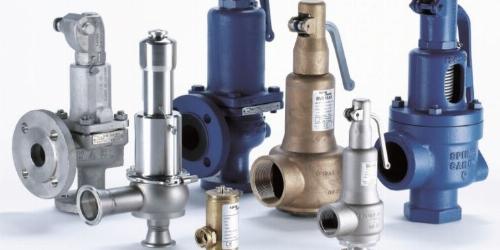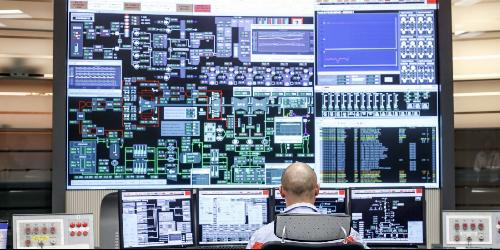In an era where precision and accuracy are paramount in various industries, the importance of instrument calibration and verification cannot be overstated. Instrumentation plays a crucial role in ensuring the quality, efficiency, and safety of industrial processes, making it essential for professionals involved in these fields to possess a thorough understanding of calibration principles and techniques. The Instrument Calibration and Verification Training Programme aims to equip participants with the knowledge and skills necessary to excel in this critical area, through a comprehensive curriculum that combines theoretical foundations with practical applications.
The training programme is designed to accommodate professionals from a wide range of backgrounds and experience levels, including instrument technicians and engineers, process control engineers, quality assurance personnel, maintenance supervisors, and plant managers. By offering a diverse array of topics and hands-on workshops, the course provides a holistic learning experience that caters to the needs of both newcomers and seasoned veterans in the field.
The programme begins with an exploration of the fundamental principles of calibration and verification, such as accuracy, precision, and uncertainty. Participants will also delve into the importance of calibration standards and traceability, fostering an understanding of their critical role in maintaining measurement reliability. In addition, the course emphasizes the responsibilities of instrument technicians, highlighting the significance of adhering to calibration procedures, ensuring safety, and complying with relevant regulations.
As the training progresses, participants will be guided through the calibration process for a variety of measuring instruments, including temperature, pressure, level, and flow devices. They will also gain insight into the calibration of final control elements and analyzers, allowing them to develop a comprehensive understanding of the complexities involved in these procedures. The hands-on workshops and practical exercises incorporated into the programme serve to reinforce the concepts and techniques covered, ensuring that participants are equipped to apply their newfound knowledge in real-world scenarios.
In addition to covering the basics of instrument calibration and verification, the training programme delves into more advanced topics, such as automated calibration systems, calibration management software, and in-situ calibration methods. These advanced techniques offer opportunities for increased efficiency and accuracy, making them valuable additions to the skill sets of experienced professionals.
Quality assurance and continuous improvement are other critical aspects of the course, with participants learning how to develop and implement effective calibration quality programs. The training also covers calibration outsourcing and vendor management, providing guidance on evaluating and selecting service providers, as well as ensuring compliance with industry standards and regulatory requirements.
Upon completion of the Instrument Calibration and Verification Training Programme, delegates will be equipped with a robust understanding of calibration principles, techniques, and best practices. They will be prepared to tackle the challenges of instrument calibration and verification in their respective industries, armed with the knowledge and skills necessary to ensure the reliability, accuracy, and efficiency of their instrumentation and control systems.
• Instrument technicians and engineers responsible for the calibration and maintenance of measuring devices and control elements.
• Process control engineers who require a better understanding of calibration techniques and their impact on process performance.
• Quality assurance and control professionals who need to ensure compliance with calibration standards and regulations.
• Maintenance supervisors and managers overseeing instrument calibration and verification programs.
• Engineering and technical personnel involved in the design, specification, and selection of instrumentation and control systems.
• Plant and facility managers who want to improve the overall reliability and performance of their instrumentation and control systems.
• Instrumentation and control system vendors and service providers seeking to expand their knowledge and skills in calibration and verification techniques.
The course is suitable for both experienced professionals and those new to the field, as it covers both foundational principles and advanced topics in instrument calibration and verification.
- Understand the fundamental principles of instrument calibration and verification, including accuracy, precision, and uncertainty
- Recognize the importance of traceability and the role of calibration standards in ensuring measurement reliability
- Identify the responsibilities of instrument technicians, including adherence to calibration procedures, safety, and regulatory compliance
- Effectively maintain and manage calibration documentation, such as certificates, records, and instrument identification
- Select appropriate calibration methods and establish proper calibration intervals and frequencies
- Perform calibration procedures on a variety of measuring instruments, including temperature, pressure, level, and flow devices
- Calibrate and verify the performance of final control elements, such as control valves, actuators, and positioners
- Understand the complexities of calibration procedures for analyzer equipment and ensure their accuracy and reliability
- Apply advanced calibration techniques, including automated calibration systems, calibration management software, and in-situ calibration methods
- Develop and implement a calibration quality program, including quality assurance and control measures, continuous improvement, and calibration audits
- Evaluate, select, and manage calibration service providers to ensure compliance with industry standards and regulatory requirements
- Troubleshoot common instrument calibration issues and devise effective solutions to improve the overall reliability and performance of instrumentation and control systems
- In addition to these learning outcomes, delegates will also benefit from hands-on calibration workshops and practical exercises, which will help reinforce the concepts and techniques covered during the training programme






- Importance and purpose of calibration
- Accuracy, precision, and uncertainty
- Calibration standards and traceability
- Adherence to calibration procedures
- Ensuring safety and quality
- Compliance with regulatory requirements
- Calibration certificates and records
- Instrument identification and tagging
- Reporting and archiving
- Selection of calibration methods
- Calibration frequency and intervals
- Calibration setup and equipment
- RTDs, thermocouples, and temperature transmitters
- Pressure gauges, transmitters, and switches
- Calibration techniques and best practices
- Level transmitters, switches, and sight glasses
- Flowmeters, including differential pressure, magnetic, and ultrasonic
- Calibration techniques and best practices
- Control valves, actuators, and positioners
- Calibration and verification of performance
- Troubleshooting and maintenance
- Gas, liquid, and environmental analyzers
- Analyzer calibration and sample handling
- Ensuring accuracy and reliability
- Practical sessions on calibration and verification
- Scenario-based exercises and troubleshooting
- Automated calibration systems
- Calibration management software
- In-situ calibration methods
- Developing a calibration quality program
- Calibration audits and assessments
- Continuous improvement in calibration processes
- Evaluating and selecting calibration service providers
- Managing and monitoring vendor performance
- Ensuring vendor compliance with standards and regulations












Training can take place in 4 formats:
- Self-paced
- Blended learning
- Instructor-led online (webinar)
- Instructor-led offline (classroom)
Description of training formats:
- Self-paced learning or e-Learning means you can learn in your own time and control the amount of material to consume. There is no need to complete the assignments and take the courses at the same time as other learners.
- Blended learning or "hybrid learning" means you can combine Self-paced learning or e-Learning with traditional instructor-led classroom or webinar activities. This approach requires physical presence of both teacher and student in physical or virtual (webinars) classrooms or workshops. Webinar is a seminar or presentation that takes place on the internet, allowing participants in different locations to see and hear the presenter, ask questions, and sometimes answer polls.
- Instructor-led training, or ILT, means that the learning can be delivered in a lecture or classroom format, as an interactive workshop, as a demonstration under the supervision and control of qualified trainer or instructor with the opportunity for learners to practice, or even virtually, using video-conferencing tools.
When forming groups of students, special attention is paid to important criteria - the same level of knowledge and interests among all students of the course, in order to maintain stable group dynamics during training.
Group dynamics is the development of a group in time, which is caused by the interaction of participants with each other and external influence on the group. In other words, these are the stages that the training group goes through in the process of communicating with the coach and among themselves.
The optimal group size for different types of training:
- Self-paced / E-learning: 1
- Instructor-led off-line (classroom): 6 – 12
- Instructor-led on-line (webinar): 6 – 12
- Blended learning: 6 – 12
- Workshop: 6 – 12
- On-the-job: 2 – 4
- Simulator: 1 – 2
Feedback in the form of assessments and recommendations is given to students during the course of training with the participation of an instructor and is saved in the course card and student profile.
In order to control the quality of the services provided, students can evaluate the quality and training programme. Forms of assessment of the quality of training differ for courses with the participation of an instructor and those that are held in a self-paced format.
For courses with an instructor, start and end dates are indicated. At the same time, it is important to pay attention to the deadlines for passing tests, exams and practical tasks. If the specified deadlines are missed, the student may not be allowed to complete the entire course programme.
A personal account is a space for storing your training preferences, test and exam results, grades on completed training, as well as your individual plan for professional and personal development.
Users of the personal account have access to articles and blogs in specialized areas, as well as the ability to rate the completed training and leave comments under the articles and blogs of our instructors and technical authors
Registered users of a personal account can have various roles, including the role of a student, instructor or content developer. However, for all roles, except for the student role, you will need to go through an additional verification procedure to confirm your qualifications.
Based on the results of training, students are issued a certificate of training. All training certificates fall into three main categories:
- Certificate of Attendance - students who successfully completed the course but did not pass the tests and exams can apply for a certificate of attendance.
- Certificate of Completion - students who have successfully completed a course could apply for a Certificate of Completion, this type of certificate is often required for compliance training.
- Verified Certificate - it is a verified certificate that is issued when students have passed exams under the supervision of a dedicated proctor.
You can always download a copy of your training certificate in PDF format in your personal account.
You will still have access to the course after completing it, provided that your account is active and not compromised and Tecedu is still licensed for the course. So if you want to review specific content in the course after completing it, or do it all over again, you can easily do so. In rare cases, instructors may remove their courses from the Tecedu marketplace, or we may need to remove a course from the platform for legal reasons.
During the training, you may encounter various forms of testing and knowledge testing. The most common assessment methods are:
- preliminary (base-line assessment) - to determine the current level of knowledge and adapt the personal curriculum
- intermediate - to check the progress of learning
- final - to complete training and final assessment of knowledge and skills, can be in the form of a project, testing or practical exam
Travel to the place of full-time training is not included in the cost of training. Accommodation during full-time studies can be included in the full board tuition fees.
While Tecedu is not an accredited institution, we offer skills-based courses taught by real experts in their field, and every approved, paid course features a certificate of completion or attendance to document your accomplishment.
You can preview samples of the training materials and review key information about the course on our website. You can also review feedback and recommendations from students who already completed this course.
We want you to be happy, so almost all purchased courses can be returned within 30 days. If you are not satisfied with the course, you can request a refund, provided the request complies with our return policy.
The 30-day money back policy allows students to receive quality teaching services with minimal risk, we must also protect our teachers from fraud and provide them with a reasonable payment schedule. Payments are sent to instructors after 30 days, so we will not process refund requests received after the refund period.
We reserve the right, in our sole discretion, to limit or deny refund requests in cases where we believe there is refund abuse, including but not limited to the following:
- A significant portion of the course has been consumed or downloaded by a student before the refund was requested.
- Multiple refunds have been requested by a student for the same course.
- Excessive refunds have been requested by a student.
- Users whose account is blocked or access to courses is disabled due to violation of our Terms and Conditions or the Rules of Trust and Security.
- We do not grant refunds for any subscription services.
- These refund restrictions will be enforced to the extent permitted by applicable law.
We accept most international credit and debit cards like Visa, MasterCard, American Express, JCB and Discover. Bank Transfers also may be an option.
Conducting classes is based on the fact that the teacher demonstrates text, drawings, graphics, presentations on an interactive board, while the content appears in the student's electronic notebook. A specially designed digital notepad and pen are used to create and edit text and images that can be redirected to any surface via a projector.
Classes are live streamed online, automatically recorded and published on the Learning Portal, allowing you to save them for reuse anytime, anywhere, on any mobile device. This makes it possible not to miss classes and keep up with classes and keep up with the passage of new material.
Real-life training uses the principles of game organization, which allows future professionals to rehearse and hone their skills in a virtual emergency. Learning as a game provides an opportunity to establish a connection between the learning activity and real life.
The technology provides the following learning opportunities:
- Focused on the needs of the user
- Instant feedback
- Independent decision making and choice of actions
- Better assimilation and memorization of the material
- Adaptive pace of learning tailored to the individual needs of the student
- Better transfer of skills learned in a learning situation to real conditions
Basic principles of training:
- A gradual increase in the level of difficulty in the game;
- Using a simplified version of a problem situation;
- Action in a variable gaming environment;
- The right choice is made through experimentation.
The main advantages of Game Based Learning technology:
- Low degree of physical risk and liability
- Motivation to learn while receiving positive emotions from the process;
- Practice - mirroring the real situation
- Timely feedback
- Choice of different playing roles
- Learning in collaboration
- Developing your own behavior strategy
Conducting practical classes online using remote access technologies for presentations, multimedia solutions and virtual reality:
- Laboratory workshops that simulate the operation of expensive bench equipment in real production
- Virtual experiment, which is visually indistinguishable from a remote real experiment performed
- Virtual instruments, which are an exact copy of real instruments
- Mathematical modeling to clarify the physical characteristics, chemical content of the investigated object or phenomenon.



















